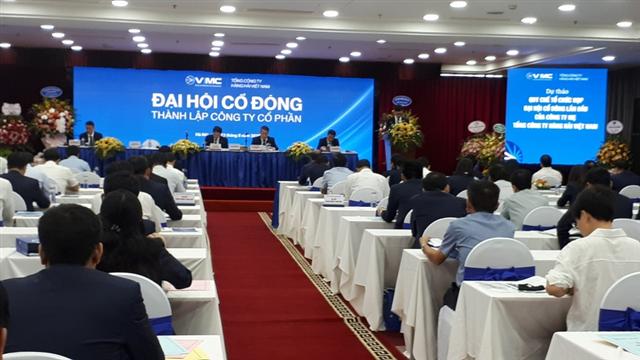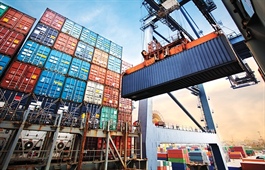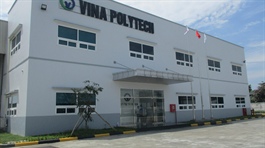VIMC sets ambitious targets for 2020-2022
VIMC sets ambitious targets for 2020-2022
Shipping giant Vietnam Maritime Corporation (VIMC) has set ambitious targets for the next two years after transforming into a joint-stock company.

VIMC held its first general shareholders’ meeting, signalling the transformation from SOE to JSC
|
VIMC on August 13 held the first general shareholders’ meeting to transform from a state-owned enterprise into a joint-stock company with a charter capital of over VND12 trillion ($521.74 million). Le Anh Son was elected as chairman of the Board of Directors and Nguyen Canh Tinh as general director.
Son said the transformation with the new VIMC branding marks a big change in mindset, business governance, and will increase the company's competitiveness.
VIMC, which previously operated under the umbrella of Vinalines, held its IPO in 2018, however, it failed to find strategic investors. VIMC is now investing in 19 units and 16 associated companies and holds stakes in 16 seaports, operating over 13,000 metres of piers, accounting for about 30 per cent of the country’s total. They include major seaports such as Haiphong, Saigon, Danang, and Quy Nhon.
VIMC aims to achieve a revenue of VND1.53 trillion ($66.5 million) in 2020, with a pre-tax loss. Tinh blamed the loss on global pandemic developments which hit the maritime transport market hard.
VIMC aims to reach shipping volume of over 18 million tonnes in 2025, cargo volume at seaports at nearly 139 million tonnes, up 5 per cent, and revenue of over VND10 trillion ($434.8 million), and consolidated profit of over VND1.23 trillion ($53.5 million).
To achieve the targets, the corporation plans to develop its container vessel fleet, build logistics centres to develop closed service chains, do restructuring, and increase technology application to increase productivity and service quality.
By 2022 VIMC aims to accommodate 30 per cent of the country’s total cargo volume at its seaports and build two container terminals at Lach Huyen International Gateway Seaport in the northern port city of Haiphong, while restructuring joint-venture seaports in the Cai Mep-Thi Vai seaport area in the southern province of Ba Ria-Vung Tau.
In the shipping business, VIMC aims to have a vessel fleet of 1.1 million DWT in total tonnage, of which container vessels will make up 13 per cent, tankers 9 per cent, dry cargo and bulk ships 78 per cent by 2022.
The corporation will develop coastal maritime transport and inland waterway transport in the northern and Mekong Delta region, cooperate with shipping lines conveying containers between Vietnam and other countries worldwide via VIMC’s transshipment and deep seaports.
VIMC also aims to develop an IT-supported logistics network by 2022, connecting goods distribution centres nationwide; and develop logistics infrastructure connecting seaports with airports, cargo distribution centres, roads, and railways.
The group will focus on investment in inland container depots and goods distribution centres with a scale of 10-30 hectares in Lach Huyen, Hanoi, Danang, Ho Chi Minh City, Hau Giang and Dong Nai while boosting cooperation with international partners, striving to become the supplier of best “Door to Door” solutions, and develop “global supply chains”.























